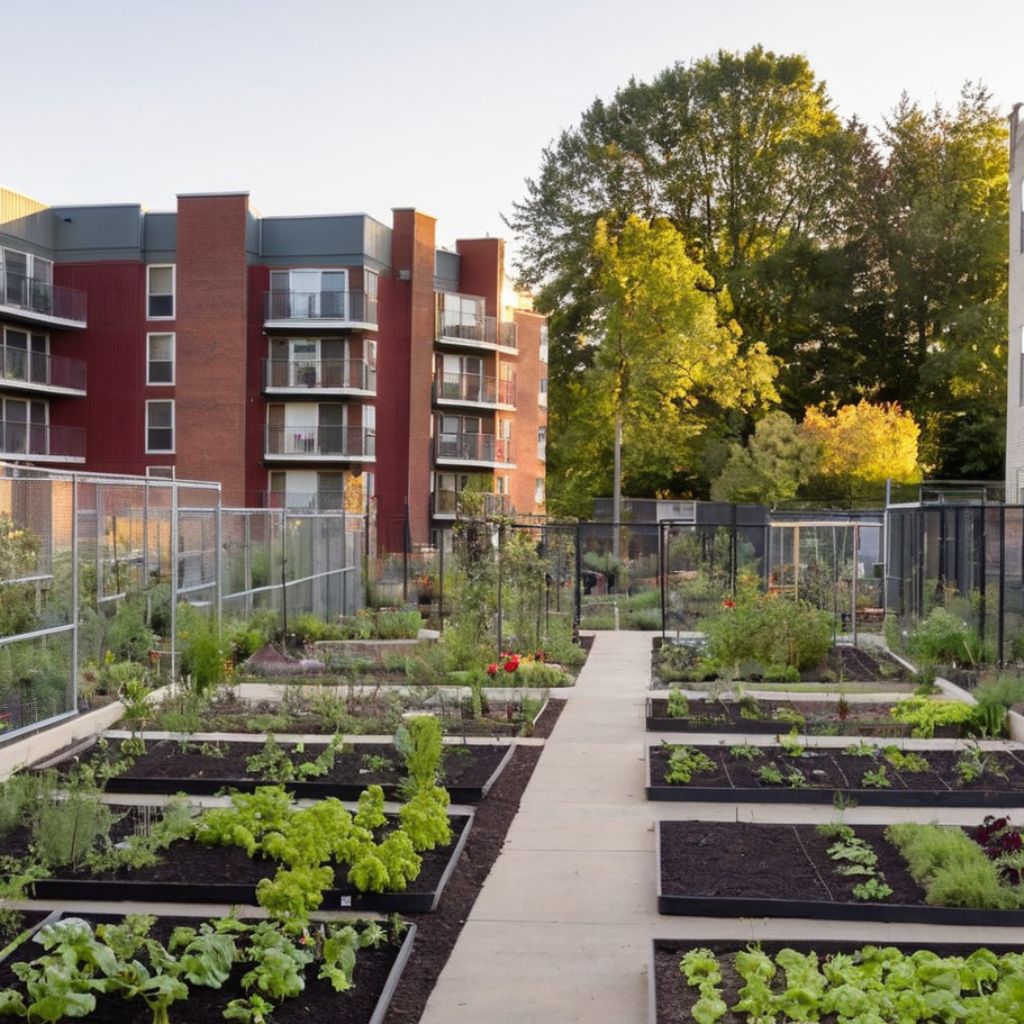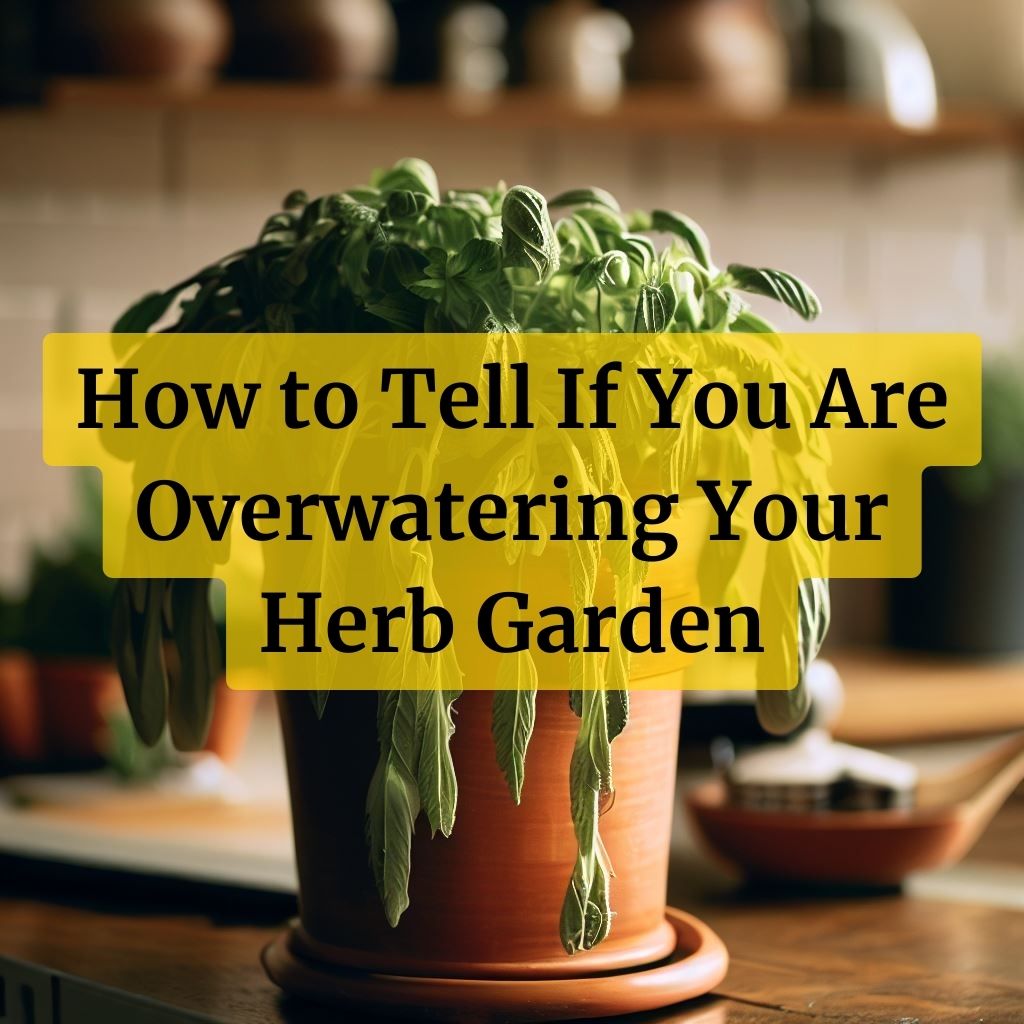
Overwatering is a common issue that can harm your indoor herb garden. In this article, we’ll explore signs of overwatering and provide expert tips for maintaining healthy herbs by avoiding overwatering.
In this article
- 1 Drooping Leaves
- 2 Yellowing Leaves
- 3 The Herb Isn’t Growing
- 4 The Herb Doesn’t Perk Up When You Water It
- 5 Know Your Herbs
- 6 How much water do herbs need?
- 6.1 How to Avoid Overwatering
- 6.2 Use the Right Containers
- 6.3 Ensure Proper Drainage
- 6.4 Prune and Harvest Regularly
- 6.5 Use a Watering Can with a Narrow Spout
- 6.6 Seasonal Variations
- 6.7 Indoor Temperature and Humidity
- 6.8 Pot Size and Material
- 6.9 Herb Growth Stage
- 6.10 Natural Light Exposure
- 6.11 Types of Herbs
- 6.12 Bottom-Watering Indoor Herbs
- 6.13 Frequently Asked Questions
Drooping Leaves
Imagine walking up to your indoor herb garden, eager to check on your thriving basil, rosemary, and mint. Instead of seeing lush, green foliage, you see drooping, sad-looking leaves. It’s like your herbs are trying to tell you something, and they are. Those drooping leaves are often the first sign that you’re overwatering your precious plants.
Herbs, like people, need their personal space. When their roots are constantly submerged in water, they struggle to breathe and absorb essential nutrients. This leads to a lack of oxygen and vital minerals, causing the leaves to droop in despair. So, if your herb garden resembles a scene from a weepy drama, it’s time to reassess your watering routine.
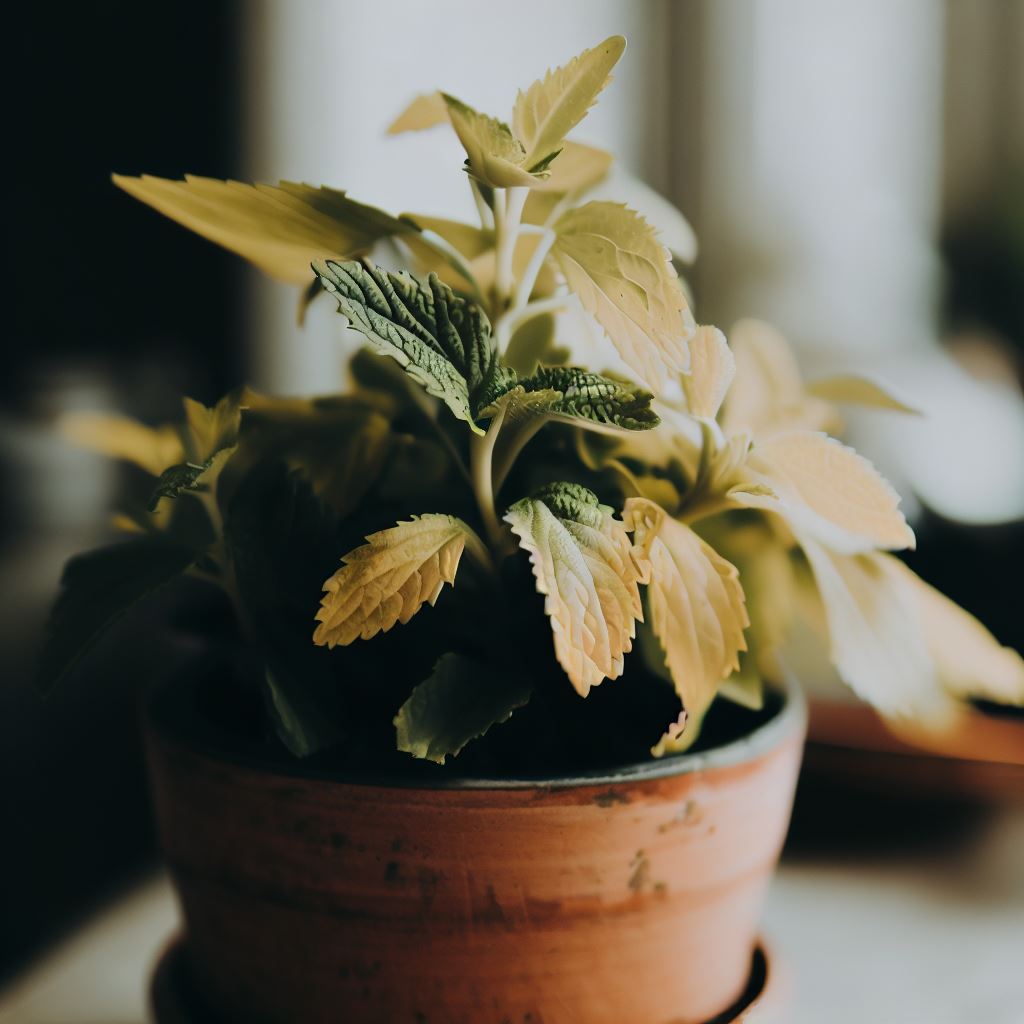
Yellowing Leaves
If your herbs could talk, they might say, “Yellow is not my color!” Yellowing leaves are another red flag that you’re overindulging your herbs with water. When excess moisture accumulates in the soil, it can lead to root rot. This condition is a surefire way to turn those lush green leaves into a sickly shade of yellow.
Root rot is the herb gardener’s arch-nemesis. It occurs when the roots of your plants are constantly submerged, creating the perfect breeding ground for harmful fungi and bacteria. The result? Yellowing leaves and a garden in distress.
The Herb Isn’t Growing
You’ve waited patiently for your herbs to grow and flourish, but they seem stuck in a growth slump. If your basil still resembles a tiny sapling after weeks of care, it’s time to consider that you might be overwatering.
Overly wet soil can inhibit the growth of your herbs. It’s like trying to run a marathon with your shoes soaked in water; progress becomes slow and challenging. The excess moisture makes it difficult for the roots to spread and establish a strong foundation for your herbs. As a result, they remain stunted and fail to reach their full potential.
The Herb Doesn’t Perk Up When You Water It
Here’s a test you can conduct to confirm if you’re overwatering. Take a close look at your herb plant, and when you suspect it’s time to water, give it a good drink. If the herb doesn’t perk up afterward, it’s a sign that overwatering might be the issue.
Normally, when you water a thirsty herb, it should respond by perking up, looking more alert and lively. This is because the roots are absorbing the water, and the plant is replenishing its hydration. However, if your herb remains lethargic and doesn’t show signs of revival after watering, it’s likely due to the excess moisture in the soil.
Interactive Watering Schedule Tool
Get tailored watering advice for your plants based on light, pot size, and more. Say goodbye to overwatering and underwatering—discover the perfect watering schedule now!
Know Your Herbs
Now that we’ve identified the signs of overwatering, it’s crucial to understand how to strike the right balance between keeping your herb garden hydrated and avoiding the dreaded waterlogged roots.
First and foremost, it’s essential to understand the individual needs of the herbs in your garden. Some herbs, like basil and mint, prefer consistently moist soil, while others, like rosemary and thyme, thrive in drier conditions. Research the specific watering requirements of each herb you’re growing to tailor your care accordingly.
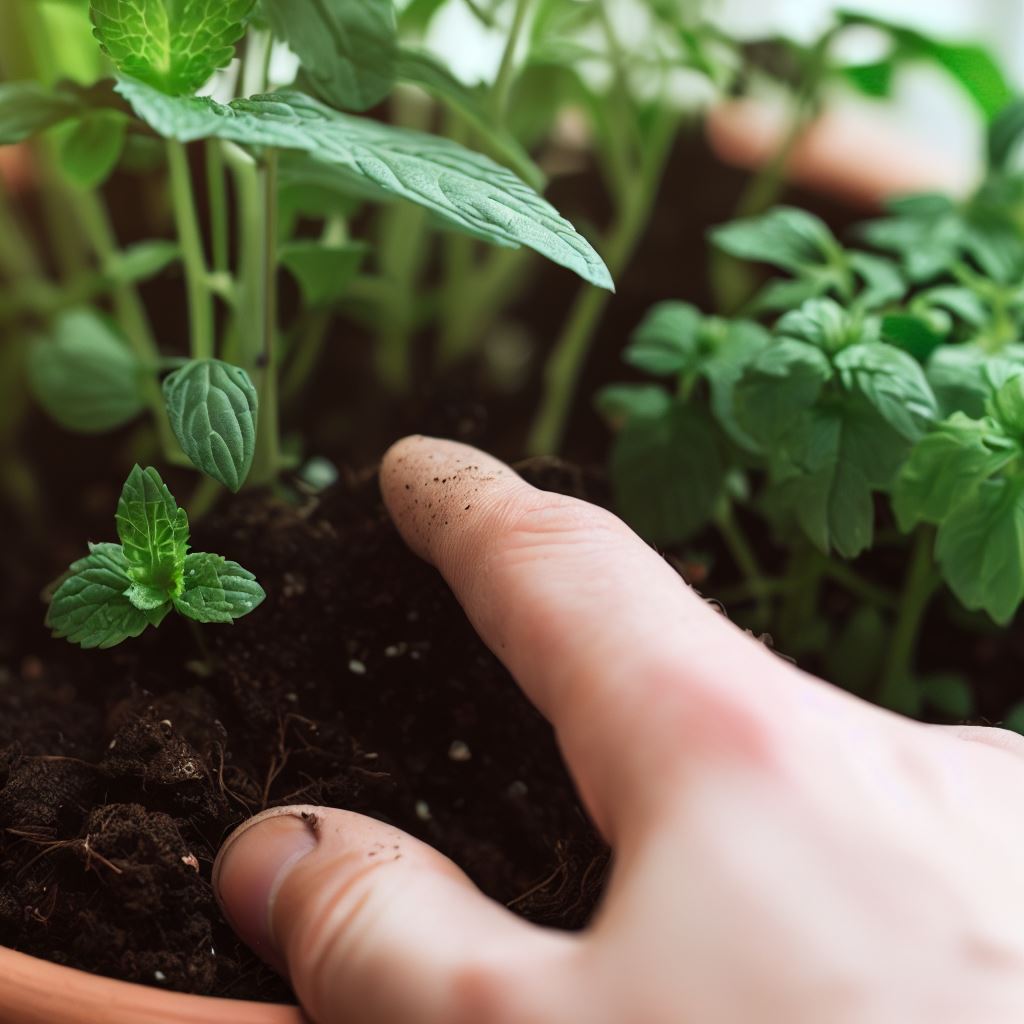
The Finger Test
One handy method to determine when it’s time to water your herbs is the finger test. Simply stick your index finger about an inch into the soil. If it feels dry at that depth, it’s time to water. If it still feels moist, hold off on watering for a bit longer.
Use Well-Draining Soil
Choosing the right soil for your indoor herb garden can make a world of difference. Opt for a well-draining potting mix that allows excess water to escape quickly. This prevents water from accumulating in the bottom of the pot and helps to avoid root rot.
Invest in Proper Drainage
Speaking of drainage, make sure your herb pots have drainage holes. These holes allow excess water to escape, ensuring that your herbs don’t sit in a pool of water. If your pots don’t have drainage holes, consider repotting your herbs into containers that do.
Avoid Overhead Watering
When you water your herbs, try to keep the water off the leaves as much as possible. Overhead watering can lead to fungal diseases and encourage pests. Instead, aim to water directly at the base of the plant, allowing the water to soak into the soil where the roots can access it.
Monitor Environmental Factors
The environment in which you grow your herbs can impact their watering needs. Factors such as temperature, humidity, and the amount of sunlight your herbs receive can all affect how quickly the soil dries out. Be mindful of these conditions and adjust your watering schedule accordingly.
How much water do herbs need?
Now that you know when to water, let’s talk about how much water your herbs actually need. As mentioned earlier, it varies depending on the type of herb and the environmental conditions, but here are some general guidelines:
- Basil: Basil prefers consistently moist soil. Water it when the top inch of soil is dry.
- Mint: Mint likes to be kept relatively moist. Water when the top inch of soil feels dry to the touch.
- Rosemary: Rosemary prefers to dry out slightly between waterings. Water when the top 2-3 inches of soil are dry.
- Thyme: Thyme likes to dry out between waterings. Water when the top 2 inches of soil are dry.
- Parsley: Keep the soil consistently moist. Water when the top inch of soil feels dry.
Remember, these are general guidelines, and it’s crucial to observe your herbs and adjust your watering routine based on their specific needs. Over time, you’ll develop a sense of when each herb requires hydration.
How to Avoid Overwatering
Now that you know how to recognize the signs of overwatering and have a better understanding of when and how much to water your herbs let’s delve deeper into how to avoid overwatering in the first place.
Use the Right Containers
Choosing the appropriate pots for your indoor herb garden can significantly impact water retention. Porous containers, such as clay pots, allow moisture to evaporate more easily from the soil, reducing the risk of overwatering. Plastic pots, on the other hand, tend to trap moisture, making them less ideal for herbs.
Ensure Proper Drainage
We mentioned this earlier, but it’s worth reiterating. Adequate drainage is key to preventing overwatering. Ensure that your pots have drainage holes, and consider using a saucer to catch excess water that drains out. Empty the saucer after watering to prevent the roots from sitting in standing water.
Prune and Harvest Regularly
Pruning and harvesting your herbs not only encourage bushier growth but also help regulate their water intake. By removing excess foliage, you reduce the herb’s overall water needs. Plus, you get to enjoy fresh herbs in your culinary creations.

Use a Watering Can with a Narrow Spout
A watering can with a narrow spout allows for precise watering at the base of your herbs. This helps you avoid splashing water on the leaves, minimizing the risk of fungal diseases and pests.
By following these tips and understanding the specific needs of your herbs, you can become a master at avoiding overwatering and maintaining a flourishing indoor herb garden. But what about other conditions that might impact your watering schedule and your herbs’ growth? Let’s explore that next.
Seasonal Variations
The changing seasons can have a significant impact on your herbs’ water requirements. During the warmer months, herbs tend to need more frequent watering due to increased evaporation. In contrast, during the colder months, they may require less water because the soil retains moisture for longer. Pay attention to the weather and adjust your watering schedule accordingly.
Indoor Temperature and Humidity
The environment in which you keep your indoor herb garden plays a crucial role in their growth. If your home has low humidity levels, the soil may dry out more slowly, requiring less frequent watering.
On the other hand, if your indoor space is particularly warm, your herbs might need more water to stay hydrated. Use a hygrometer to monitor humidity levels and adapt your watering routine accordingly.
Pot Size and Material
The size and material of your herb pots can also influence how often you need to water. Smaller pots have less soil, which dries out more quickly than larger containers. Additionally, pots made from materials like terracotta are porous and can cause the soil to dry out faster, while plastic or glazed ceramic pots retain moisture for longer periods.
Herb Growth Stage
The growth stage of your herbs can impact their water requirements. Young, newly planted herbs may need more frequent watering to establish their roots, while mature herbs with well-developed root systems typically require less frequent hydration.
Natural Light Exposure
The amount of natural light your herbs receive affects their growth and water consumption. Herbs placed in direct sunlight may dry out more quickly, while those in lower light conditions may retain moisture for longer. Be mindful of the light levels in your indoor herb garden and adjust your watering schedule accordingly.
Types of Herbs
Different herbs have varying water needs. For instance, herbs native to arid regions, like thyme and oregano, prefer drier conditions, while herbs from more humid climates, like basil and parsley, thrive in moist soil. It’s essential to research the specific requirements of the herbs you’re growing to ensure they receive the right amount of water.
By considering these factors and adapting your care routine to your specific circumstances, you’ll become a skilled herb gardener who can maintain a flourishing indoor garden year-round. Remember, successful herb cultivation is a journey of observation, adaptation, and patience.
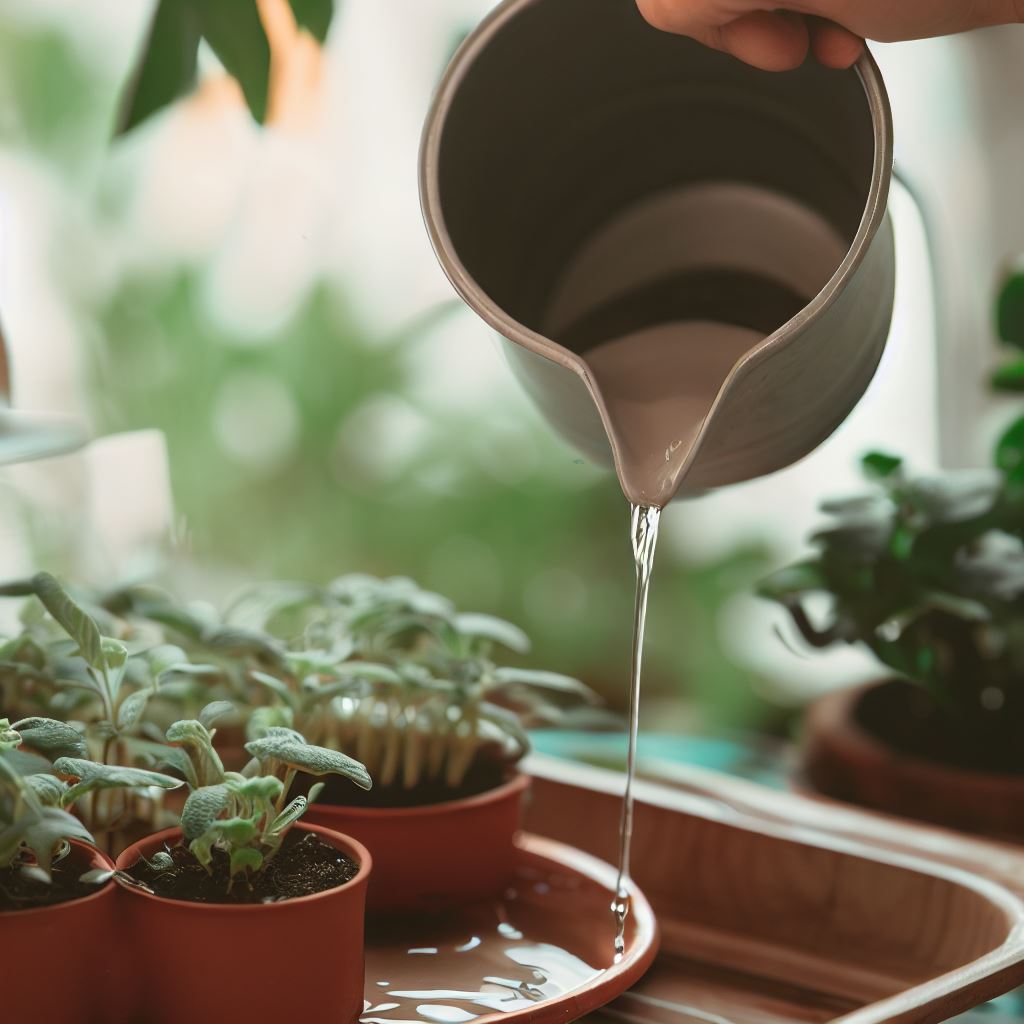
Bottom-Watering Indoor Herbs
One effective technique to maintain proper soil moisture and avoid overwatering is bottom-watering. This method involves adding water to a tray or saucer placed beneath your herb pots. The pots then absorb water from the bottom, allowing the roots to take up moisture as needed.
Here’s how to bottom-water your indoor herbs:
- Place a saucer or tray under each herb pot.
- Fill the saucer or tray with about an inch of water.
- Wait for the water to be absorbed through the drainage holes in the pots. You’ll notice the soil darkening as it becomes moist.
- Once the soil is adequately moistened (usually within 20-30 minutes), empty any excess water from the saucer to prevent waterlogged roots.
Bottom-watering is particularly beneficial for herbs prone to root rot, as it ensures that water is absorbed from below rather than saturating the top layers of soil. It also encourages the development of deep, healthy roots.
In conclusion, maintaining a thriving indoor herb garden isn’t just about knowing when to water; it’s about understanding the unique needs of your herbs and the environmental conditions in which they grow.
By fine-tuning your watering routine and considering these factors, you’ll create the ideal environment for your herbs to flourish and provide you with a steady supply of fresh, aromatic leaves for your culinary adventures.
Frequently Asked Questions
Is tap water safe for indoor herbs?
Tap water is generally safe for indoor herbs, but the quality can vary depending on your location. If your tap water contains high levels of chlorine or other chemicals, consider using filtered or dechlorinated water to avoid potentially harming your herbs.
Can I use a self-watering system for my indoor herb garden?
Yes, self-watering systems can be a convenient way to maintain consistent moisture levels in your herb pots. These systems often consist of a reservoir that gradually releases water to the plants as needed. However, it’s crucial to monitor the system to prevent overwatering.
What should I do if I suspect my herbs have root rot?
If you suspect root rot, act promptly to save your herbs. Remove the affected plant from its pot, trim away any damaged roots, and replant it in fresh, well-draining soil. Ensure that the new pot has good drainage to prevent future issues.



